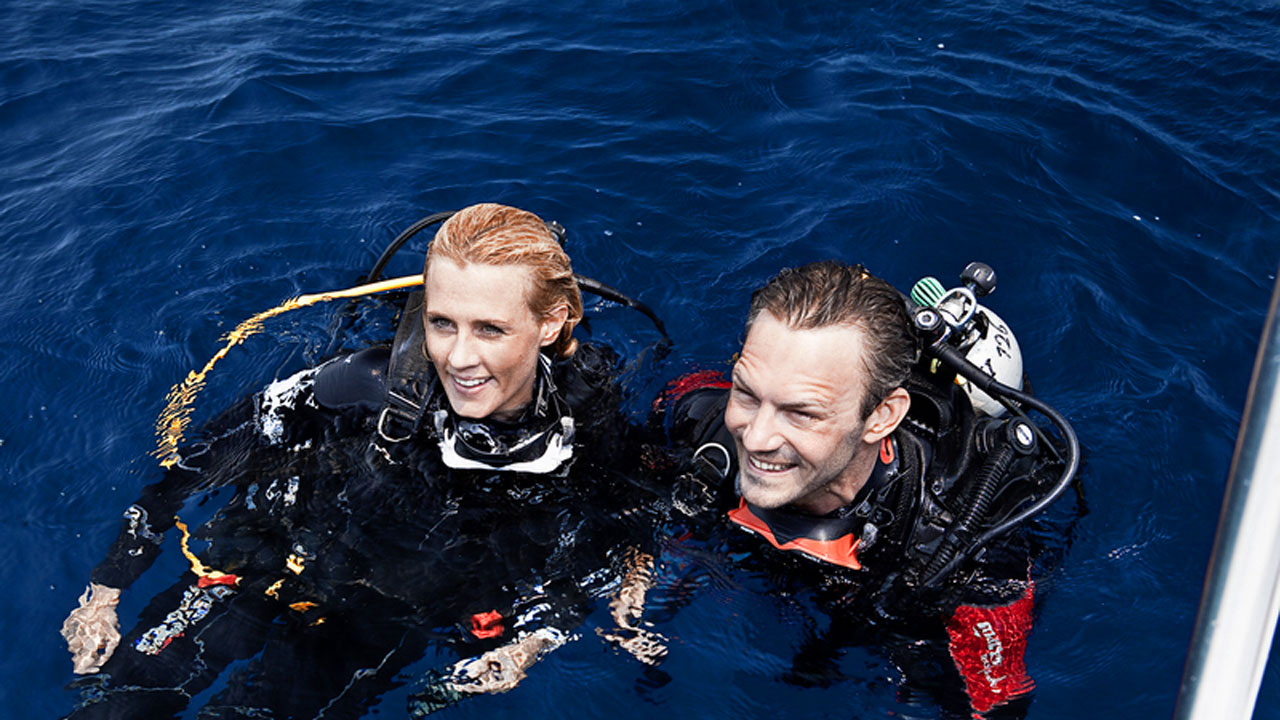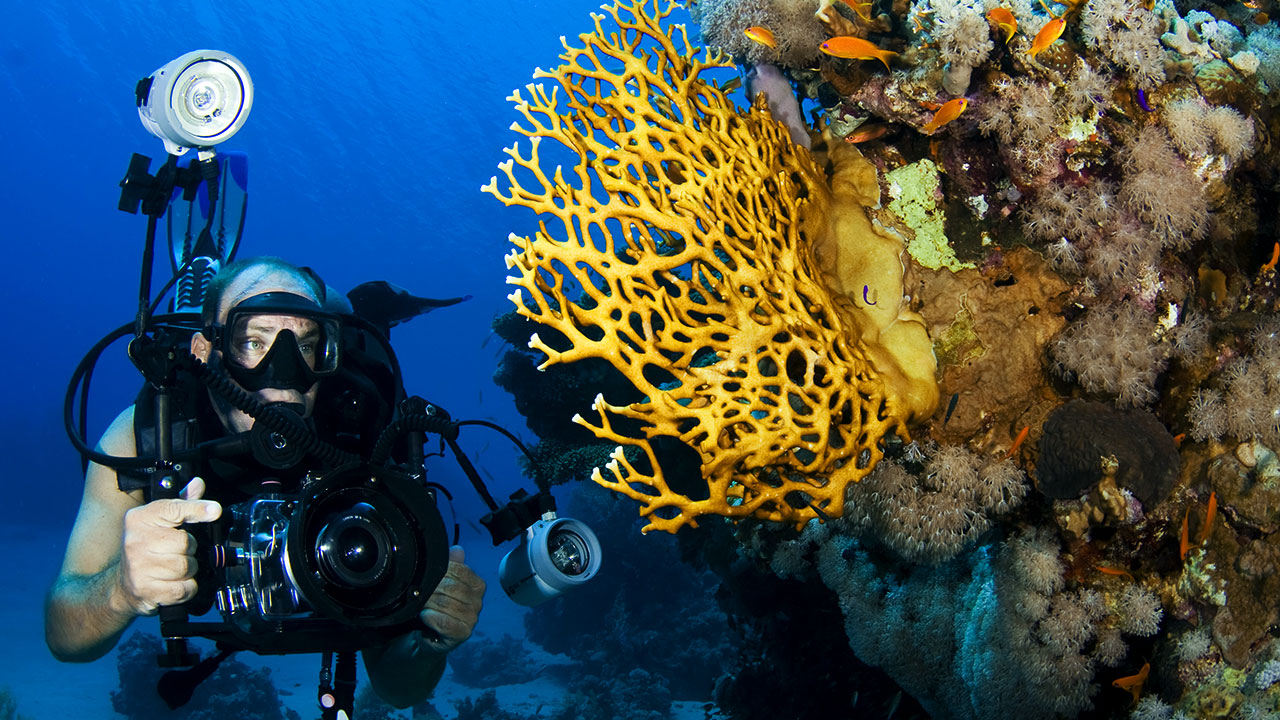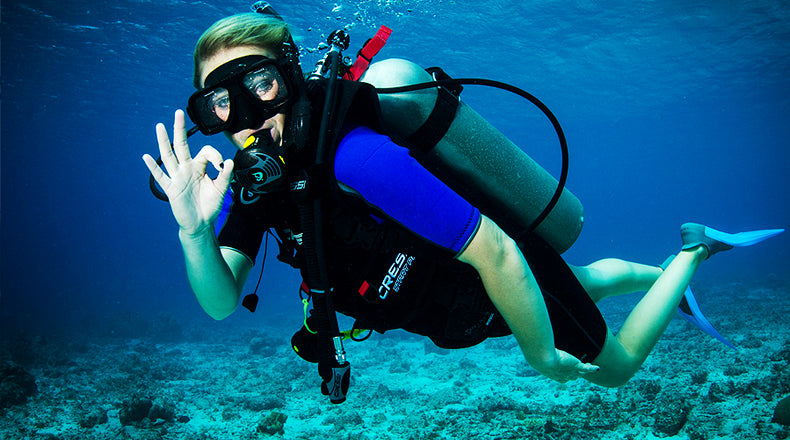Are You Properly Weighted?

Diving is, at heart, about control. Only when you are in control of your movement, air, and level of confidence, you can enjoy a great dive. One particularly important factor that influences your dive experience is how well you are able to manage your weight and control your buoyancy. When you are properly weighted, you will glide through the water naturally, like a marine creature. Furthermore, you will not spend your precious air fiddling with the BC valve controls to find a balance.
Buoyancy control is something that all new divers must learn. At first, of course, it may be a challenge. We don’t usually need to consider buoyancy when walking, driving a car, or doing any of our regular activities. However, you probably instinctively know the importance of weight. Have you ever tried to go for a jog or a hike with a huge, heavy backpack? How did that go? Chances are, you sweated, gasped for air, got tired out sooner. It works the same way in the water - only you can’t just take another big gulp of air if you run out. When diving, weight isn’t just an issue of comfort; it’s all about safety.
A diver who is not properly weighted may have a hard time plowing through the water. He or she may also have to over-inflate the buoyancy compensator, pushing the torso up, and as depth changes, this excess air may need to be dumped. This causes an endless cycle, where the diver is constantly adjusting the air in the BCD to compensate for the excess weight. You probably don’t want to dive to fiddle with a buoyancy compensator. Let’s face it: you want to dive to see the marine life and enjoy yourself, and this is much harder to do if you are not properly weighted.
To avoid endless frustrations and adjustments, divers should do a weighing test. Yes, it takes a little extra time, but it will help you get the maximum amount of time and enjoyment underwater, which is probably what you are after, anyway. The good news is that you do not need to do a weight test before every dive. You will want to do one during open-water training to get a general sense of your current weight needs. After that, you will need to perform the test again if your weight changes or you choose different scuba gear. You will also want to do different weighting tests for saltwater and freshwater diving since your weight needs will be different in the two environments.
You can actually perform two slightly different weighing tests to get more precise results - one at the start of your dive and another one at the end. So, for the first one you will need to perform the following steps:
1. Enter the water, wearing your standard scuba gear, and stand clear of any obstacles.
2. Keep your regulator in your mouth and take a deep breath while releasing air from the buoyancy compensator.
3. Relax your arms at your sides, let your legs dangle, and remain still while you bob. You should quickly stabilize and float at a specific depth. Make sure that you hold your breath until you stop moving and begin to float at a constant depth. For the weighting test to be accurate, you have to remain relaxed and motionless.
4. Note your position in the water. If you are correctly weighted, the water will be at the level of your eyes. The lower half of your mask window will be submerged and the top portion will be above water.
5. If your head is too exposed in the water, you need more weight. If you are submerged too far during the weight test, you need to get rid of some lead. Emerge from the water, adjust the weight as necessary, and try the test again. Keep adjusting until you have the proper weight.
6. Once you have achieved the proper weight, exhale completely and allow yourself to sink below the surface of the water. Once you have submerged a few feet, inhale, and start breathing naturally.
While this test is fairly accurate, you can get even better results if you check your buoyancy at 5 meters (15 feet) of depth with around 50 bar (700 psi) of air in your tank. This is easiest to do during your safety stop at the end of your dive.
1. Ascend to your safety stop depth and, If you still have more than 50 bar (700psi) in your tank, simply use your Octopus second stage regulator to drain your cylinder down to 50 bar (700 psi).
2. Stay calm and breathe normally. Concentrate on relaxing and being still as any sculling with hands or feet will propel you upward.
3. Make sure to dump all air from your BCD. Once you do that, you should be neutrally buoyant, rising slowly as you inhale and sinking slowly as you exhale. If you start descending regardless, you're overweighted. If you start ascending, you may need more ballast weight.
4. If you find that you need to adjust your weighting, you can ask your buddy to help you to add or take off lead to get you perfectly neutrally buoyant.
Once you surface from your dive, note the details of your weighting test on paper so that you know your correct weight needs. Writing down the results and the conditions of each weighting test (such as your current weight, the diving equipment used, and the type of water) can cut down on the number of weighting tests you need.




